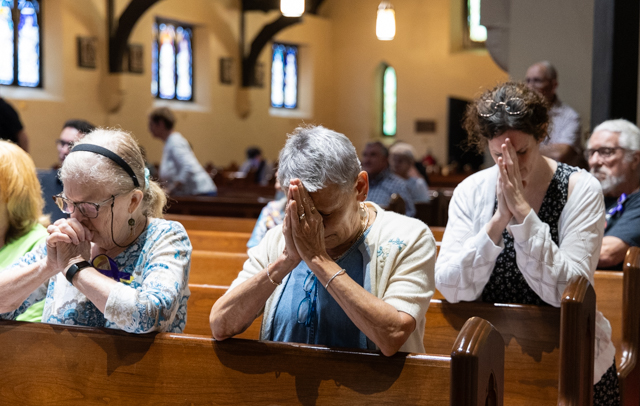Humane Society in ‘code red’ due to capacity
Published 8:00 am Tuesday, July 11, 2023

- A pair of kittens wake from a nap in their kennel at the Bowling Green-Warren County Humane Society on May 18.
The Bowling Green-Warren County Humane Society went under a rare “code red” last week as it ran up against maximum capacity limits.
“I’ll be truthful, I’ve been here almost 25 years and I’ve only done that like two or three times, ever,” said Lorri Hare, director of the shelter.
She said she rarely employs the urgent designation, which signals that the Humane Society may have to euthanize animals due to a lack of space, because she doesn’t want to guilt someone into adopting a pet they can’t fully care for.
But a seemingly endless wave of animal intakes and less and less space to house them forced Hare’s hand.
“I did not make the decision to do it lightly, but we were at a terrible point where if something didn’t happen quickly, a lot of animals were going to be put to sleep,” Hare said.
Adoption fees were lowered to $25 recently to combat the surplus. While the Humane Society enjoyed a strong week of cat and kitten adoptions, dog and puppy intakes far outpaced the amount of canines going out the door to new homes.
Hare said almost 90 dogs and puppies were adopted the week of June 29 to July 6. In that same timeframe, 141 were brought into the shelter.
The 179 dogs under the shelter’s care as of Thursday are pushing the Humane Society’s square footage to the absolute limits.
“Last week, we had 6-7 dogs in a kennel where only 2-3 dogs should be,” Hare said.
Hare said euthanizations for space have not yet occurred, but the sheer volume of intakes continues to be untenable. She said it’s been about three and a half years since the shelter last had to euthanize due to overcrowding.
Hare said up until a few years ago, shelters across the country were beginning to see a downward trend of intake numbers, but those hopeful indicators were dashed due to the COVID-19 pandemic.
“Most full service veterinarians started doing curbside-only and no elective surgeries, which spay and neuter is considered elective,” she said. “A lot of low-cost spay and neuter clinics closed.”
She estimated that this disruption in animal fixing services set the fight against animal overpopulation back by about five years.
Due to the exponential nature of animal reproduction, a handful of missed spay and neuter opportunities can quickly snowball out of control, leading to the overcrowding the shelter is dealing with today.
Hare said when she sees a cat that isn’t fixed, she doesn’t see just one animal – she pictures the pyramid of generations that a single feline can generate in just a few years.
“On average, one pregnant cat, her offspring, their babies, their babies … within seven years, you can create 450,000 kittens,” She said. She added that one pregnant dog, over the span of five years, can be responsible for about 67,000 animals.
While the summer months are typically the shelter’s busiest for intakes, Hare said the pandemic’s disruption isn’t helping. She said that even if the shelter received funds to build on and add more kennel space, “in literally two weeks it’d be full.”
“The reality is it’s probably going to take us three to four years to dig out of this hole,” Hare said.
On the positive side, BISSELL Pet Foundation’s national “Empty the Shelters” event began Thursday, allowing the Humane Society to keep adoption costs for fully vetted and fixed animals at $25 until July 31.
Hare stressed that spaying and neutering pets, services both provided by the shelter, is “100% the answer” in combating animal overpopulation.
Despite the dire situation, Hare urged potential adoptees to not be guilted into picking up a new furry friend.
“We really want it to be a for-sure thing. We don’t want people to be like ‘I’ll adopt and in a month take it back and then maybe (the shelter) won’t be in that scenario,’ ” she said. “But if you’ve been thinking about it, right now is the time.”






